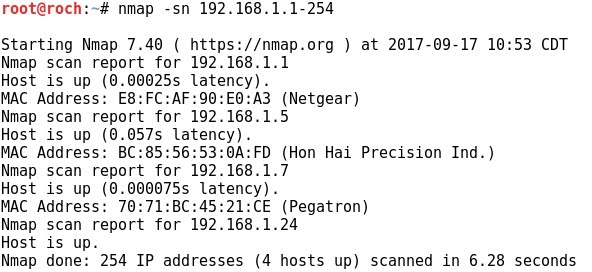DNS TUNNELING WITH DNSCAT2
- Layout for this exercise:

1 - INTRODUCTION
- dnscat2 creates an encrypted command-and-control (C&C) channel over the DNS protocol, which is an effective tunnel out of almost every network.

- dnscat2 can be used as a communication channel between a target host and the C&C server, because even in the most restricted environments DNS traffic should be allowed to resolve internal or external domains.
- Commands and data are included inside DNS queries and responses therefore detection is difficult since arbitrary commands are hiding in legitimate traffic.
- dnscat2 comes in two parts: server and client
1.1 - dnscat2 server
- The server is designed to be run on an authoritative DNS server. It's written in Ruby, and depends on several different gems.
- It can tunnel any data, with no protocol attached, which means it can upload and download files, it can run a shell, etc ... it can also potentially tunnel TCP, but that's only going to be added in the context of a pen-testing tool (that is, tunneling TCP into a network), not as a general purpose tunneling tool.
- It's also encrypted by default.
1.2 - dnscat2 client
- The client is designed to be run on a compromised machine. It's written in C and has the minimum possible dependencies.
- The client needs to be executed on the target in order for the server to receive a connection. Traffic is transmitted in an encrypted form and also it supports authentication via pre-shared secrets.
- When running the client typically a domain name is specified. All requests will be sent to the local DNS server, which are then redirected to the authoritative DNS server for that domain.
- If there is no authoritative DNS server, it is possible to use direct connections on UDP/53. They'll be faster, and still look like DNS traffic to the casual viewer, but it's much more obvious in a packet log (all domains are prefixed with "dnscat.", unless you hack the source). This mode will frequently be blocked by firewalls.
- To sum it up, some advantages of dnscat2:
- Support of multiple sessions
- Traffic encryption
- Protection from MiTM attacks with secret key
- Run PowerShell scripts directly from memory
- Stealthy
2 - SETTING UP DNSCAT2
2.1 - dnscat2 server
- To download the server (for Kali):
https://github.com/iagox86/dnscat2
- Cloning and installing the dnscat2 server to Kali:


- Running the server it waits until a session is requested by the remote client:

2.2 - dnscat2 client
- To download the client (for Windows):
https://downloads.skullsecurity.org/dnscat2/dnscat2-v0.07-client-win32.zip
- Once downloaded dnscat2 client to Windows there is an executable:

3 - ESTABLISHING THE DNSCAT2 SESSION
- The session is initialized by the client, just calling to the server in this way:

- The server acknowledges the session, but it is very important to notice that the same string is shared between the two parties client and server:

- Connecting to the session (window) 1 we have a command session command (NYC) 1> indicating that the session is successfully established:

- Available options:

4 - REMOTE COMMAND EXECUTION
- One example of how to execute commands remotely from Kali to Windows would be just launching the Calculator with command exec calc.exe:

- The remote execution is successful, as we can checked at the Windows' side:

5 - REMOTE SHELL
- The most powerful option would be to spawn a remote shell, just calling the command shell:

- At the Windows' side the cmd.exe program is loaded:

- Going to the just created new session (window) 3 created we've got a remote shell:

- Running ipconfig and whoami at Kali to check that we are connected to the correct Windows NYC machine:


6 - CAPTURING ENCRYPTED TRAFFIC
- Both Tcpdump and Wireshark detect the traffic bewteen the two parties, but the traffic is encrypted and not readable in plain text:
- Tcpdump:


- Wireshark with Follow UDP Stream:



DIGITAL SIGNATURE WITH GPG2
- Layout for this exercise:

* Note: this exercise is based on the previous one, where a pair of asymmetric keys were generated with GPS2 and RSA algorithm:
https://www.whitelist1.com/2017/09/20-linux-security-asymmetric.html
1 - Introduction
- A digital signature is a mathematical scheme for demonstrating the authenticity of digital messages or documents.
- A valid digital signature gives a recipient reason to believe that the message was created by a known sender (authentication), that the sender cannot deny having sent the message (non-repudiation), and that the message was not altered in transit (integrity).
- Digital signatures are a standard element of most cryptographic protocol suites, and are commonly used for software distribution, financial transactions, contract management software, and in other cases where it is important to detect forgery or tampering.
https://en.wikipedia.org/wiki/Digital_signature
2 - Signing a file with the private key
- First of all, let's check that both parties (CentOS and Debian) are part of the same GPG2 public-key-cryptographic system:


- Let's create a text file at the CentOS device:



- Now CentOS' root user is going to signed this text file with its own private key, outputting a file with a .ds extension:


- The passphrase generated at the previous exercise is required:

- The .ds file is unreadable because it is encrypted:

- Connecting to the remote device Debian:

- Transferring the digitally signed document:

- marie user at Debian receives the document:

- Now marie at Debian decrypts the document using CentOS' root's public key, outputting a decrypted file:

- The content of the decrypted file matches the original document written by the root at CentOS, so the whole process has been successful:

- The fact that the document is signed or encrypted with CentOS' root's private key and decrypted with CentOS' root's public key ensures the authenticity of the author of the document.
- In other words the digital signature provides the non-repudiation property that the sender is really the one who claims to be the sender of the document.




































































